This post may contain affiliate links. Please read our disclosure policy.
The secret to perfect fatayer dough is here! Fatayar are traditional Lebanese savory pies with a tender dough that is wonderful but can be finicky if you don’t have the right recipe and tips.
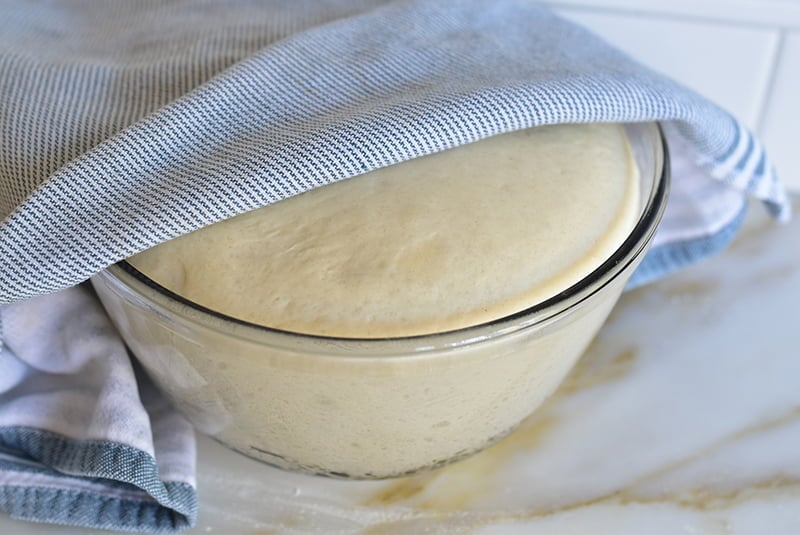
When I first pursued baking fatayer in earnest, I knew there were problems to be solved to make the perfect little pies I enjoyed from the hands of Mom and Sitto. Even some of the Middle Eastern bakery versions were not my guiding lights, because with those the dough can be too thick and puffy. My goal was and remains a thinner pouch, still flavorful and tender but not overwhelming what’s inside. After PhD-style research from books and conversations, and the many batches recipe testing requires in order to reach the holy grail, and swear words I didn’t know I had in me, I discovered the keys to unlock the secrets of great fatayer. Use the dough for my Lebanese Spinach Pie (Spinach Fatayer) recipe with great success.
There’s actually more than one “secret” to excellent fatayer dough. Here they are:
Use a sticky dough.
A high water-to-flour ratio makes this dough sticky. My definition of sticky here is when fingers touch the dough, it is damp–but the dough does not leave residue on your fingers. A good amount of oil in the dough also contributes to the dough’s stickiness. Why sticky? The stick-factor is essential in shaping the fatayer, so that the “seams” stay closed when the triangle (or squares for sfeha), are baked.
No second rise.
Because want a thin, chewy result, a second rise of the dough is dispensed with. Typically dough like Garlic Butter Glazed Talami require a second rise to re-inflate the dough’s gluten and create the desired crumb (talami is a very open, soft crumb with lots of airy bubbles). Fatayar dough is meant to be flat and thin. The single-rise also allows for a more pliable dough to roll out.
Roll and cut the dough.
Mom did not do this, and neither did Sitto. Maureen does. I love this swift way of creating multiple rounds to be filled for fatayer. There is one drawback here: the scraps need time for the gluten to relax before being re-rolled, and this dough from the second rolling may not be as good as the dough from the first roll. It is less pliable, not quite as sticky as the first. Can you pull of small pieces of dough, roll each one out for the fatayer, and avoid the scraps altogether? Absolutely. This is a traditional method I wouldn’t dream of nay-saying.
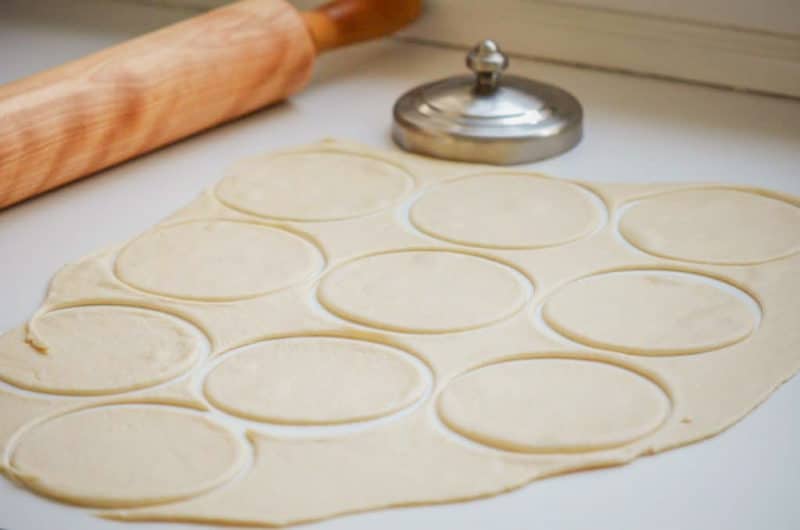
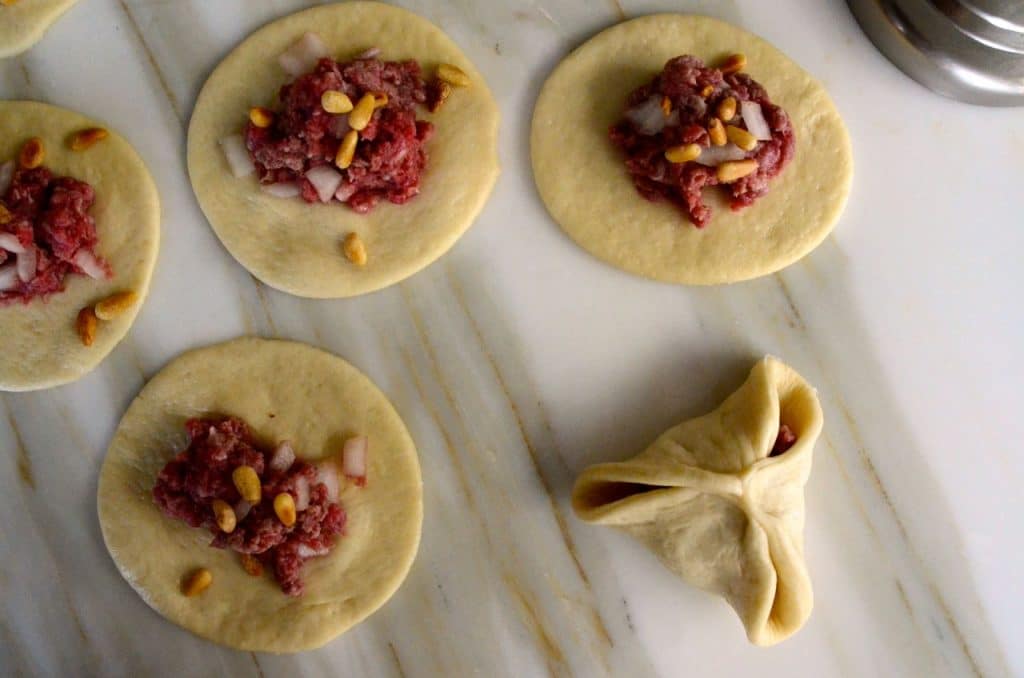
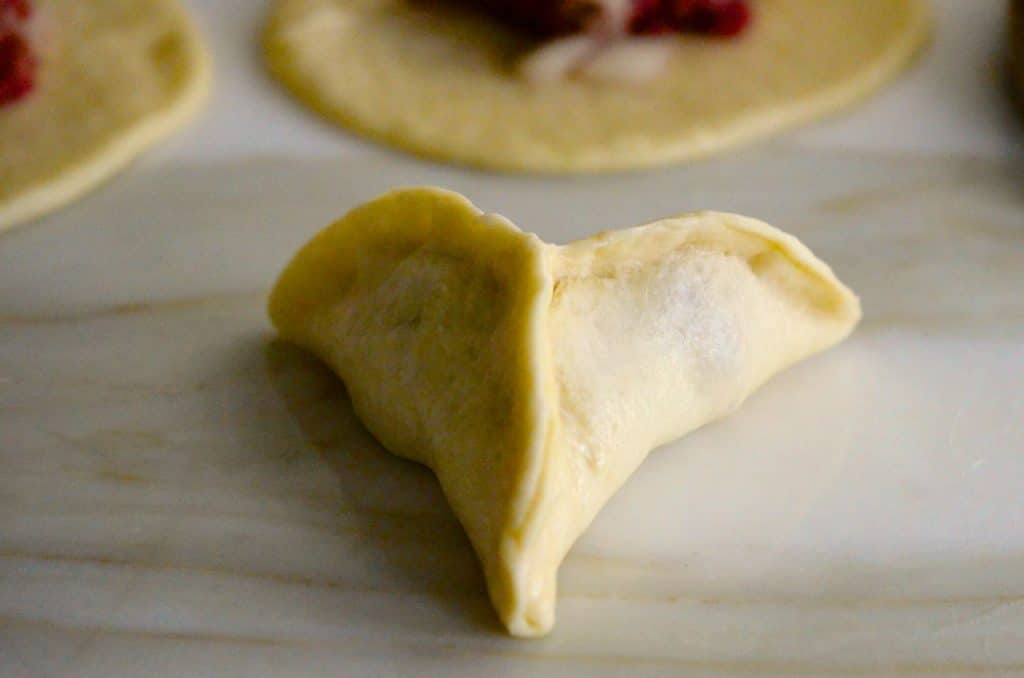
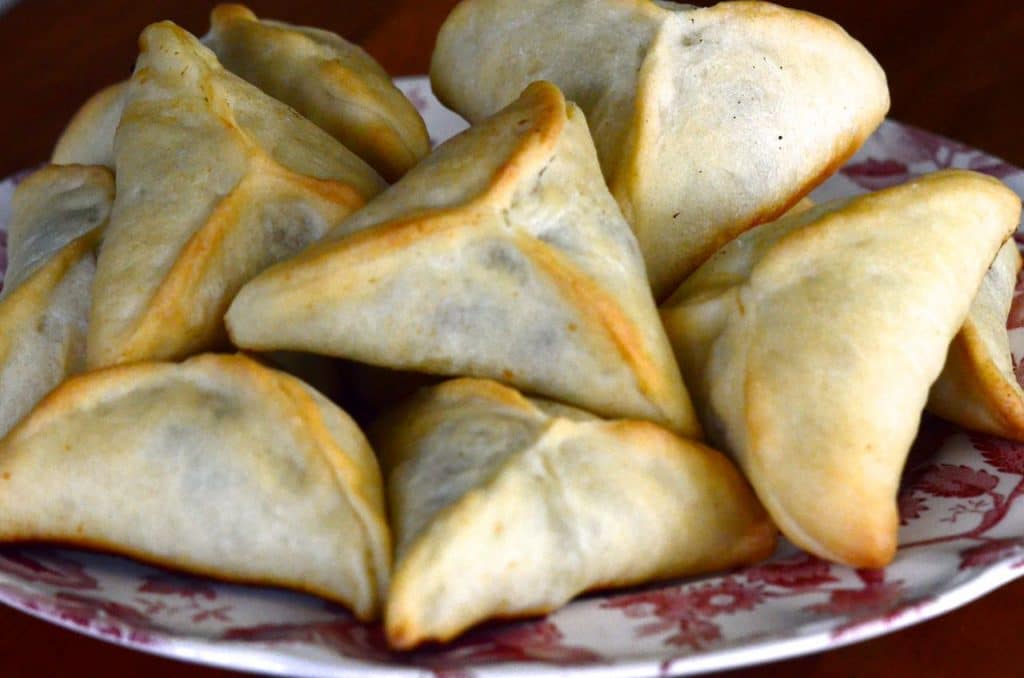
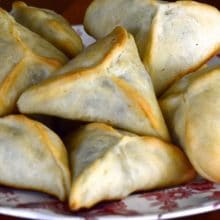
Fatayar Dough
Ingredients
- 1 tablespoon active dry yeast
- 1 teaspoon granulated sugar or honey
- 1 cup cup warm water (80°-90° F)
- 3 cups unbleached, all-purpose flour
- 1 teaspoon salt
- 1/3 cup neutral oil, such as safflower or canola, plus more to oil the bowl
Instructions
- Proof the yeast by dissolving it in ¼ cup of the warm water with the sugar or honey. Set aside for about 10 minutes, or until the mixture looks frothy and creamy.
- Whisk together the flour and salt in a mixer bowl or medium bowl. Create a well in the center and add the oil and proofed yeast mixture. Using a stand mixer fitted with the hook attachment or by hand, slowly work the wet ingredients into the dry, adding 1/2 cup of the water slowly. Add more of the water only as necessary until the dough comes together and is cohesive.
- Knead the dough by hand or with the dough hook in the mixer until the dough is very soft, smooth, and tacky/sticky to the touch (but it should not leave dough on your fingers). Kneading by hand can be awkward at first because the dough is so wet, but as you knead, the dough will firm up a bit and absorb all of the water.
- In a clean bowl at least twice the size of the dough, lightly coat the dough and the sides of the bowl with oil. Cover with plastic wrap and set the dough aside to rise in a warm spot until doubled, not more than 90 minutes. Take care not to overproof the dough.
- Roll half of the dough out on a dry work surface to 1/8-inch thickness. Gently lift the dough from the work surface, working your way around the perimeter of the dough to the center, to allow for contraction. Cut the dough into 4-inch rounds. Knead together the scraps, cover with plastic, and set aside.
- Proceed with filling and shaping the dough, using one of these recipes:Spinach FatayarMeat FatayarSquash (Koosa) Fatayar
Nutrition information is automatically calculated, so should only be used as an approximation.

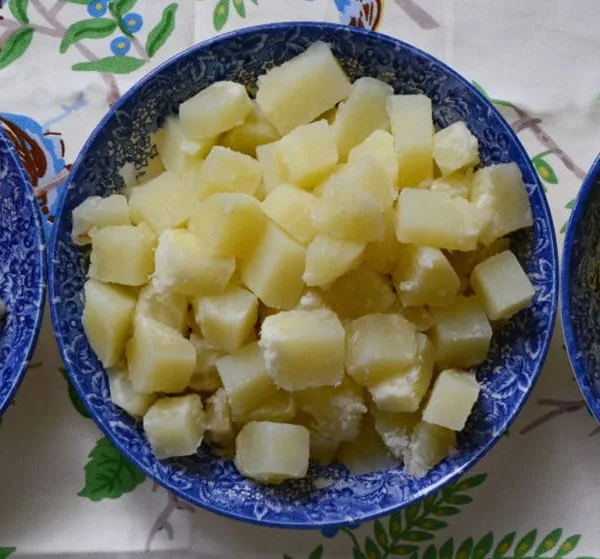
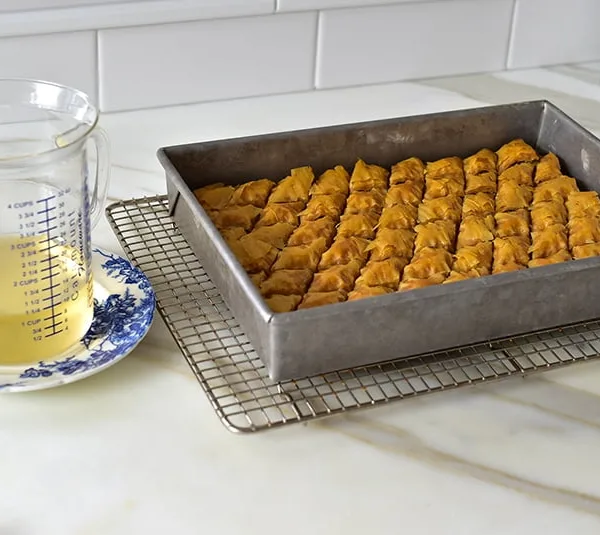
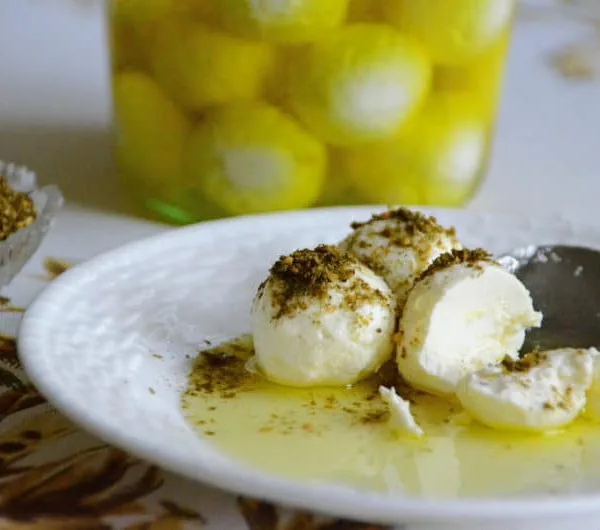







I really want to try your spinach variation! Do you have any tips for making these gluten free?
I haven’t developed gluten-free but you could try 1-1 Gluten Free flour. Generally that means you’ll need more liquid and a longer rest time, but it can be tricky with yeast breads to make the conversion.
Hello! I am desperately searching for the perfect fatayer dough recipe and I think this might be it! I have two questions, though. First, Can I use olive oil instead of a neutral oil? Second, can you provide weighted measurements by any chance? TYIA!
Hi Lena! This is your dough! Olive oil makes the dough heavy; I prefer the neutral oil but if you do use EVOO, use a mild one. I’m working on getting weighted measures on my recipes, and now you will see the metric option here!
Hi! I adore you. I grew up with Lebanese food as a staple, being both sets of grandparents were from Duma. Your recipes are exactly as Emi and Sita’s. My question is, can Fatayar dough be used for Zatar dough? Thank you for your book, it’s my go to.
Leslie
Leslie I adore YOU! Thank you so much for your sweet kind note. I’m honored to be like Emi and Sita! I don’t use this fatayer dough for za’atar. I know many do make a dough that suffices for both, but I like different qualities in the two doughs. Check out this za’atar dough here and let me know what you think!
it’s Tuesday before Thanksgiving. In Ann Arbor it is going to rain all day long. My Wednesday before Thanksgiving is booked to the minute. It looks like today is Meat Pie Tuesday.
My sitto’s recipe differs, but is close enough to yours. My sitto taught my Sicilian mother how to cook Lebanese. The Sicilian cooked so much better than any Lebanese women in the family. I was extremely lucky because both my Sitto and mother taught me how to cook. I am the only one among friends who knows how to cook this food. I even got a tattoo – a Lebanese flag and Italian flag on my shoulder – to show how proud of my heritage I am. I have two sons who are not interested in learning these recipes of food that they love. So I bought each one of your cookbooks. One day when they’re dying for hushweh the night open it!
Wish me luck.
Hurray Fatayer day! Patricia we are kindred spirits, wanting to keep our traditions of incredible foods learned from our mother-aunt-Sitto pros. Thank you for sharing my cookbook with your sons! As you say, day will come when they need a recipe and there it will be. That’s the whole mission of the book and all of my work, work we love and share together. Thank you! Happy Thanksgiving, your food will be so good, with beautiful meat pies.
I love this recipe — I used it once for meat pies, and a second time for labneh and mint pies. The first time it turned out perfectly. The second time, the dough puffed up too much. I’m not sure what I did wrong. Do you ever let your dough rise a second time, even briefly? Any idea what the usual culprits are for overly puffy pies? Thank you!
Hi Maureem, As-Salamu Alaikum.
I’m a descendant of Syrians that leave in Brasil.
I just want to say thanks you for share yours recipes with us.
How kind and beautiful. We too have family in Brazil, and I wish I knew them! Thank you so much with love from Michigan.
Hello! Do you have any high altitude adjustments for the dough. I live at 6500ft and struggle when making yeast dough. Our climate is very dry and having less atmosphere lets the dough rise out of control!
I really appreciate this question. I have not tested high altitude and am very interested. If the issue is too much rise, I would reduce the yeast to just 1/4 teaspoon. Here’s what I found and will work on these tips in my recipes! “Reduce baking time by 5 to 8 minutes per 30 minutes bake time. Increase liquid by 1-2 tablespoons per cup to increase moisture. Add 1 tablespoon of flour per recipe for stability. Reduce sugar by up to 1 tablespoon per cup to avoid dense dough.”
I made this recipe today and had an issue with the dough. I have seen other recipes that call for 6 cups of flour with 1 tablespoon of yeast. My fatayer puffed up a bit. I’m guessing because of too much yeast or not enough flour. They held the triangular shape, but swelled up like little pillows.
Hi David, how fun you are making fatayer at home. Try my fatayer dough recipe…I think you will find it makes a beautifully thin crust for the fatayer, not too puffy at all.
Great recipe Maureen, I finally trusted using raw meat in my fatayer! I always used to par cook it. It comes out much better when using raw meat. I do cook the onions though! There is plenty of time for it to cook in the oven.
Beautiful Lynn!
Excellent recipe and instructions, all my spinach fatayer turned out perfect! It is because I have made this many times in the past, just winging it because my mother made them and I thought I would simply get it right someday. But these were better than mom’s and any that I have bought. The smaller size is a a real plus.
Ed, that is so great and an honor to compare with your mom’s, thank you!
Being of Lebanese extraction, I have tons of recipe books as well as many, many of my mom’s recipes and therefore do not need all of your recipes. I would like to send SOME of your recipes to my email address. I do not subscribe to social media and therefore cannot find a link to email specific recipes. Without having to print each one, can you suggest how I can email certain recipes. Thank you.
Beverly, thank you for your note. I don’t have a way for you to receive only specific recipes, but hopefully you’ll find my emails informative and will find recipes there you would like to have!
Being married to a Lebanese man I have tried to make him some meals that he is use to. I have made the spinach pies twice and I think I have got that recipe down pat. Thank you for your directions and my next goal is to make the meat pies.
Wonderful Loretta, thank you!
Maureen:
My wife and I have tried twice, once spinach, once hushweh, and we have had trouble with the dough not sticking together. They go in the oven pinched and come out open like a flower in bloom. Not that they don’t taste great but it’s the look we’re concerned with. We’d like them to look nice in a presentation.
I’ve tried this recipe several times and it has been perfect….
question for you Maureen….for the dough , can you use the pita bread recipe with the yogurt instead???? To form the fatayer
Annette, absolutely worth a try. The difference will be a puffier pouch for your fatayar.